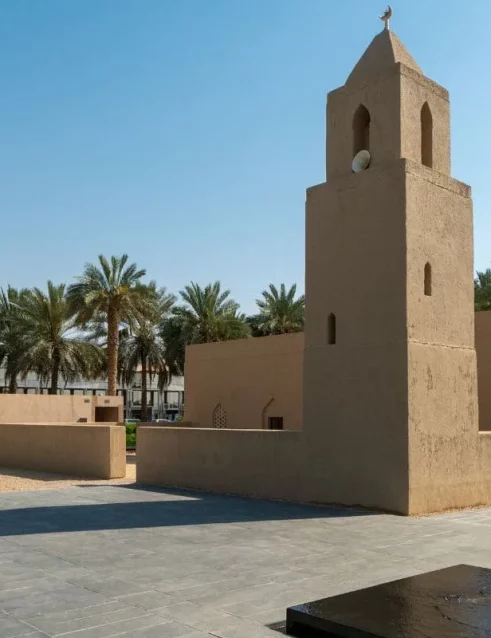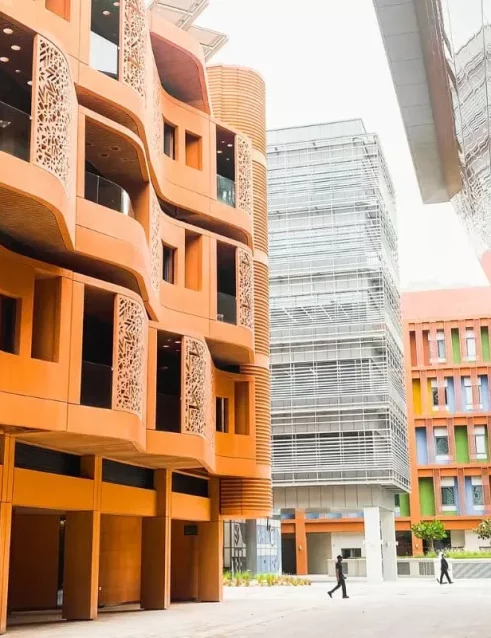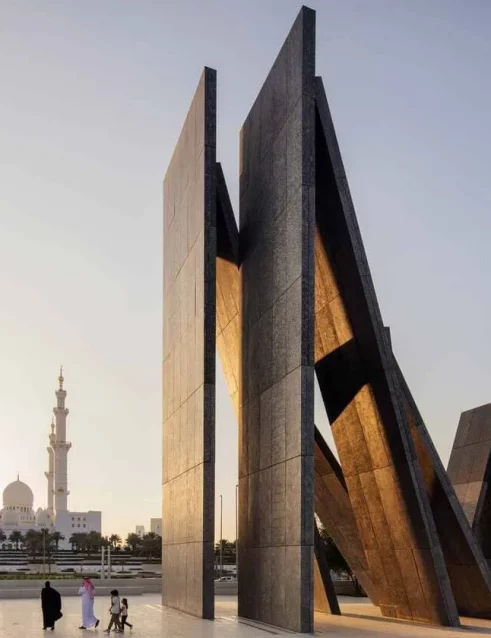Qasr Al Hosn
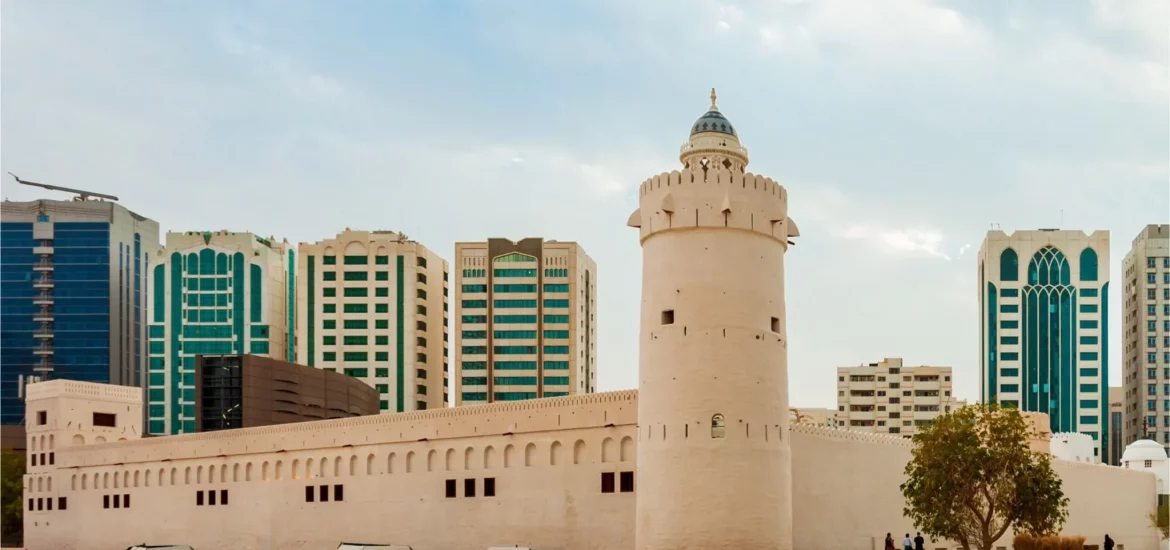
Visitors to Qasr Al Hosn fort can immerse themselves in its layers of history through exhibitions, tours, and augmented reality experiences. It offers a unique opportunity to explore historical artefacts, architecture, and archival materials, revealing stories of the region’s past. The site maintains its relevance in contemporary times through cultural programs, workshops, and performances that celebrate the spirit of the Emirati people.
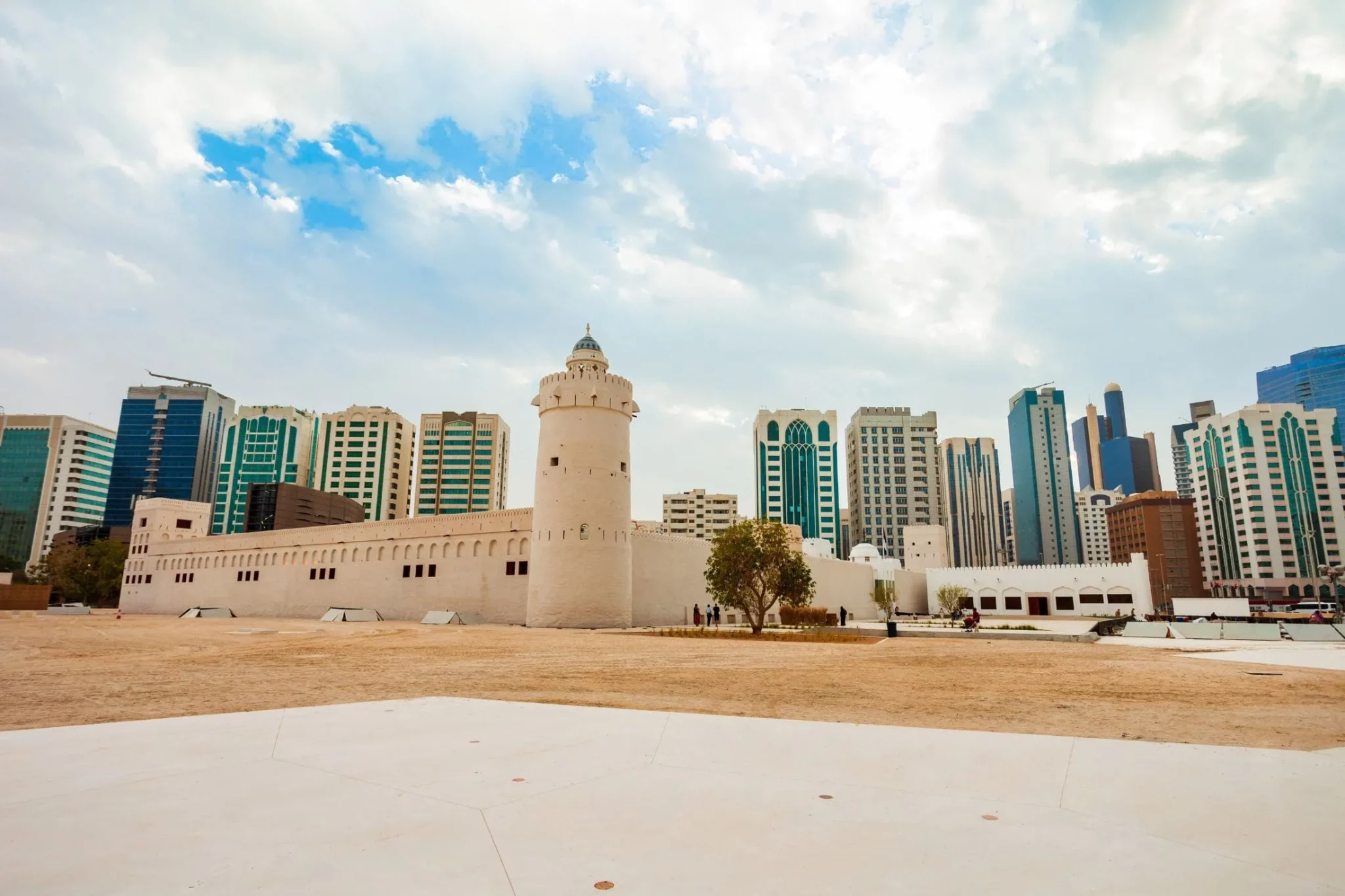
Qasr al Hosn stands as a testament to Abu Dhabi’s rich past, encapsulating the heritage and evolution of the Emirate. As the oldest stone building in Abu Dhabi, it has witnessed centuries of political, social, and cultural transformations.
Origin and Establishment
Qasr al Hosn, the symbolic birthplace of Abu Dhabi, began as a watchtower in the 1790s, guarding the coastal trade routes and securing the only freshwater well on the island. This fort was expanded into the fortified palace, Qasr al Hosn, which became the residence of the ruling family and a beacon of governance and community development.
Historical Significance
Over 400 pearling boats once operated under the command of Qasr al Hosn, marking Abu Dhabi as a pivotal maritime hub in the late 1800s. The fortification’s significance grew as it served as a robust political center during the rule of Sheikh Zayed the Great, whose reign was the longest in Abu Dhabi’s history. It has been the center of the community’s growth and remains a custodian of the Emirate’s storied lineage.
Restoration Efforts
In recent years, dedicated restoration efforts have ensured that Qasr al Hosn stands not only as a historical landmark but also as a cultural foundation for the people of Abu Dhabi. Painstaking work has been carried out to preserve its structure and significance, allowing it to continue its role in educating and inspiring future generations about the Emirate’s rich heritage.
Qasr al Hosn Architecture
Qasr Al Hosn fort stands as a testament to Abu Dhabi’s architectural evolution, blending traditional design with functional robustness. Each element of the structure showcases its historical significance and the region’s cultural heritage.
Design Elements
The architecture of Qasr al Hosn reflects a traditional Arabian design aesthetic that prioritizes both form and function. Intricate decorative features such as the ornamental finials atop the fort’s towers exemplify the meticulous attention to detail characteristic of the period’s architecture. Rectangular layouts and central courtyards are common elements, facilitating airflow and managing the region’s intense heat. The use of arches and columned hallways provides both structural support and a measure of elegance.
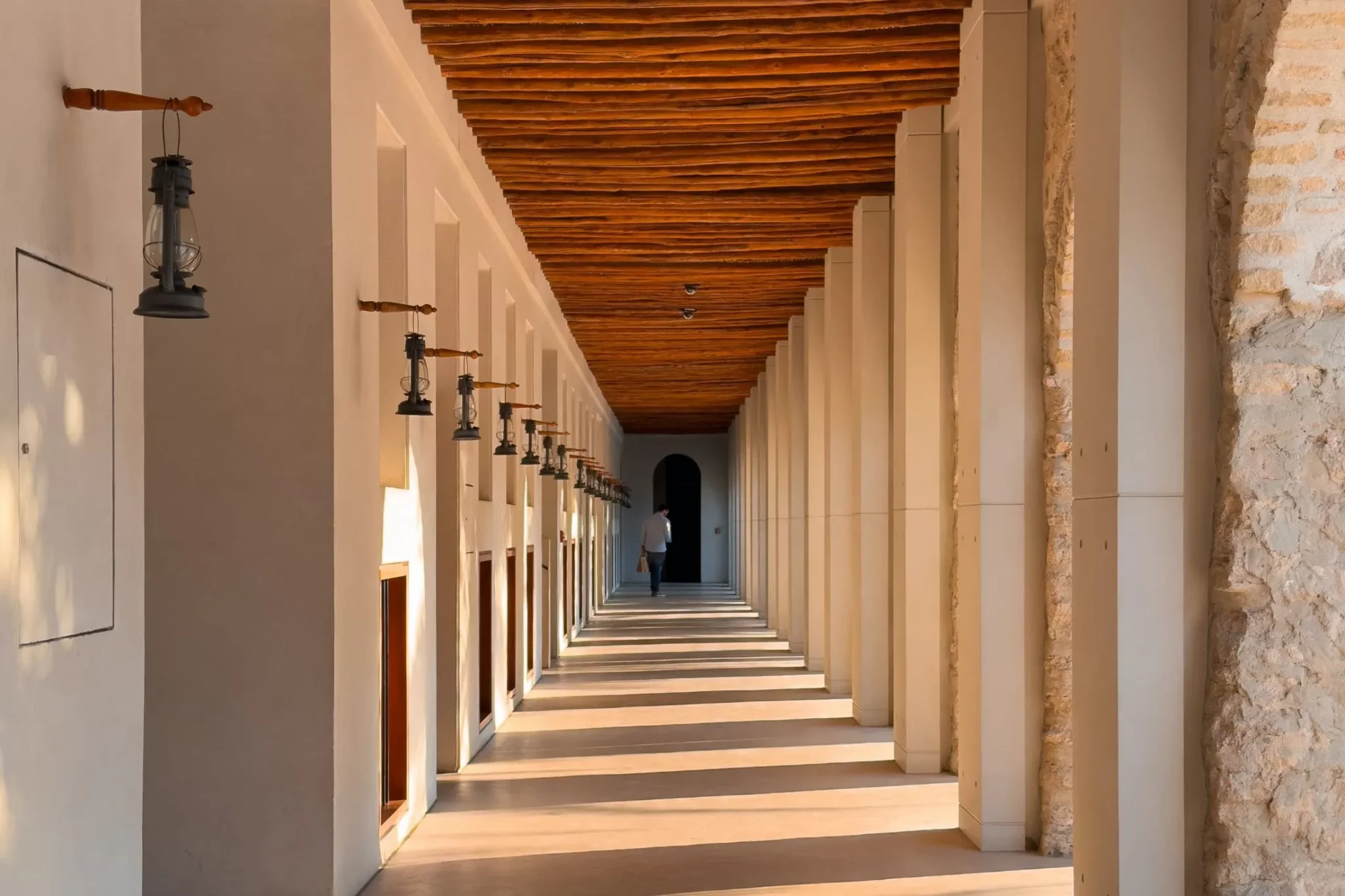
Construction Materials
The materials used in the construction of Qasr Al Hosn are indigenous to the region, lending to the fort’s authentic Arabian character. The primary material is coral stone, which was readily available from the shallow waters around Abu Dhabi and is well-suited to the local climate. Other materials include sea stone, sandalwood, and palm logs, combined to maximize strength and insulation.
Defensive Features
The defensive features of Qasr Al Hosn fort were strategic and formidable to protect the settlement. Its key features include thick walls and reinforced entry points to deter invasions and withstand attack. The fort also encompassed a watchtower that provided surveillance capabilities over the surrounding landscape and sea routes, integral for early warning against potential threats.
Symbol of Emirati Heritage
Qasr Al Hosn is the oldest stone building in the city of Abu Dhabi and functions as a tangible link to the past. Constructed in the 1790s, it began as a watchtower safeguarding the coastal trade routes and blossomed into the seat of government and residence for the ruling family. Today, it stands as an emblem of the Emirati way of life, encapsulating centuries of social, political, and cultural developments.
Literature and Arts
Qasr Al Hosn is not only an architectural marvel but also a crucible for the arts and literature. It plays host to the Qasr al-Hosn Festival, an annual event that celebrates the UAE’s cultural heritage through music, dance, and storytelling. The festival beckons artists and historians alike, highlighting traditional and contemporary forms of expression. The fort, including previously restricted areas during the festival, becomes a stage where performances narrating the rich tapestry of the UAE’s history come to life.
Visitor Experience
Visitors to Qasr Al Hosn in Abu Dhabi can immerse themselves in the deep history of the region through comprehensive museum exhibits and engaging guided tours.
Museum Exhibits
Qasr Al Hosn boasts a range of museum exhibits that allow visitors to explore its historical significance as Abu Dhabi’s oldest stone building. The museum showcases the fort’s evolution from a watchtower constructed in the 1790s to a modern global metropolis. The exhibits include a myriad of artifacts that narrate the story of Abu Dhabi and its transformation over the centuries.
Guided Tours
Guided tours at Qasr Al Hosn offer an informed and in-depth look at the site’s history and cultural relevance. Expert guides provide descriptive narratives about the fort’s past, right from its early days protecting the coastal trade routes to its emergence as a cultural hub. Visitors have the option to book their guided tour spots online or on-site, enhancing their understanding of Abu Dhabi’s rich heritage.
Events at Qasr al Hosn
Qasr Al Hosn, widely recognized as a beacon of Abu Dhabi’s culture, is not only a historic fort but also a venue for a diverse array of cultural events. These gatherings range from traditional festivals to seasonal happenings and cultural performances, celebrating the rich heritage of the United Arab Emirates.
Qasr al Hosn Festival
The Qasr Al Hosn Festival is an annual event that stands as a testament to Abu Dhabi’s history. It’s both a celebration of the past and a showcase of heritage, offering visitors an immersive experience into the traditions of the Emirati community. The festival includes cultural exhibitions, traditional workshops, and historical demonstrations that bring to life the spirit and culture of the people.
Seasonal Events
With the changing seasons, Qasr Al Hosn hosts a variety of events that reflect the cultural significance of the time of year. For instance, during the holy month of Ramadan, the Ramadan at Al Hosn event provides an innovative cultural experience, featuring exhibitions on traditional crafts and opportunities for local artisans to display their skills.
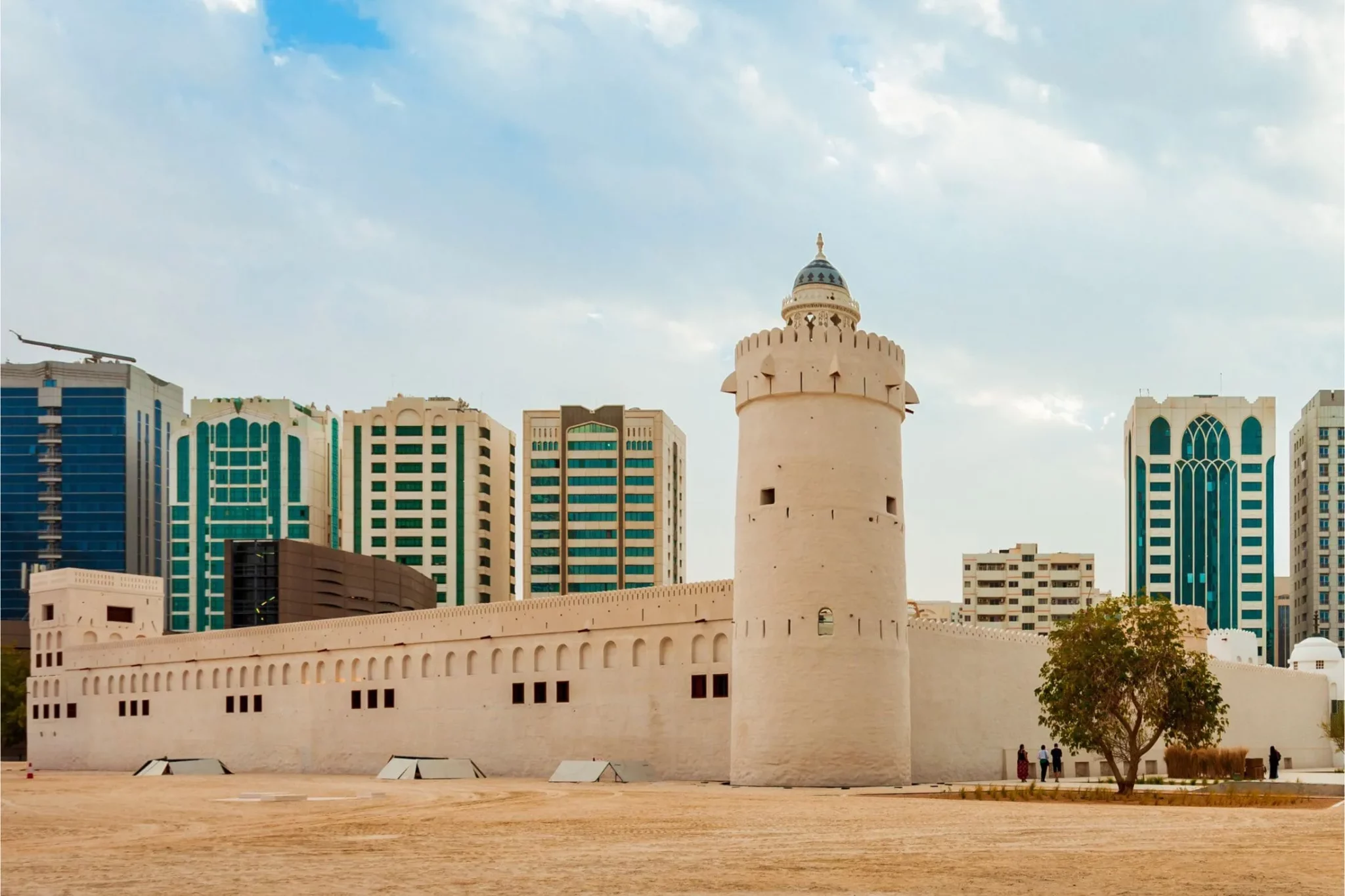
Cultural Performances
Engaging cultural performances are a cornerstone of Qasr Al Hosn’s event calendar. They illuminate aspects of Emirati heritage through music, dance, and storytelling. These performances are designed not only to entertain but also to educate visitors on the UAE’s rich cultural tapestry. The fort’s courtyard often transforms into a stage where traditions are brought to life for all to enjoy.
Conservation Efforts
The conservation of Qasr Al Hosn has been a meticulous process aiming to honor the rich historical significance of Abu Dhabi’s oldest stone building and the symbol of the United Arab Emirates’ ruling family.
The conservation efforts for Qasr Al Hosn have emphasized restoring the fort’s structural integrity while preserving the authentic aspects of its cultural heritage. This has included the careful renovation of the edifice’s exterior and fortifications, painstaking restoration of original features such as the mangrove poles, and the maintenance of the fort’s aesthetic characteristic to its historical period. Notably, the site has undergone transformation into a museum that serves to educate visitors on the historical progression of Abu Dhabi and the fort’s role therein.
International Collaborations
Qasr Al Hosn’s preservation has benefited from global partnerships with conservation experts and organizations. This international support has facilitated an exchange of knowledge and techniques crucial for undertaking such a historically sensitive restoration. The collaborations have aimed to ensure that all repair and restoration work aligns with international standards of conservation, ensuring the site’s historical integrity is upheld for future generations.
Educational Outreach
Qasr Al Hosn’s educational outreach initiatives play a vital role in preserving and conveying the historical significance of the fort to newer generations. These efforts are centered around interactive learning experiences and collaborations with educational institutions.
Programs and Workshops
Qasr Al Hosn conducts various educational programs and workshops tailored to different age groups. These activities include:
- Cultural Crafting: Workshops that involve traditional Emirati crafts, offering hands-on experiences.
- Heritage Storytelling: Sessions where local tales and the fort’s history are brought to life for young audiences.
- Archaeology for Kids: Interactive digs and exploration activities that teach children about the fort’s past through discovery.
Through these workshops, Qasr Al Hosn engages participants with the UAE’s rich history and fosters appreciation for cultural heritage.
Partnerships with Schools
The enhancement of historical knowledge through school partnerships is a key component of Qasr Al Hosn’s educational outreach. Here are some specifics:
- Curriculum Integration: Collaborating with educators to include the history of Qasr Al Hosn in the school curriculum.
- Site Visits: Facilitating field trips for students to experience the fort’s history first-hand.
- Teacher Workshops: Providing resources and training for teachers to help them integrate cultural heritage education into their teaching.
By engaging with schools, Qasr Al Hosn ensures that the educational value of the site extends beyond its walls, instilling a sense of national identity and historical awareness in students.
For more detailed information regarding these initiatives, one can explore the dedicated Qasr Al Hosn Exhibition, which is open to the general public year-round.
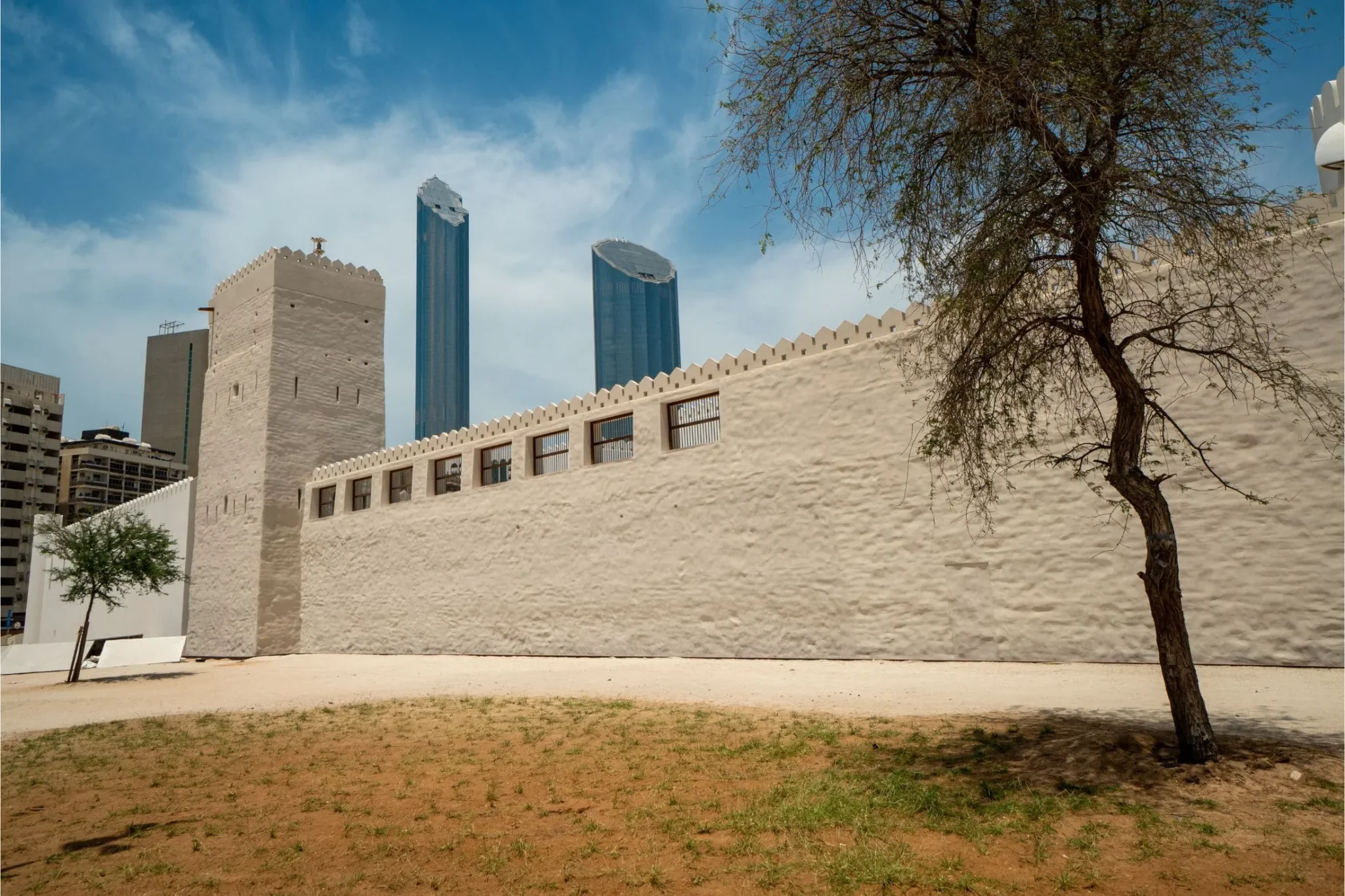
Nearby Attractions Visitors to Qasr Al Hosn in Abu Dhabi, the city’s oldest stone building, can enhance their experience by exploring nearby attractions that reflect the rich cultural heritage and history of the region. These notable sites provide a deeper understanding of the emirate’s transformation and its traditions. Cultural Foundation
Just a short walk from Qasr Al Hosn, the Cultural Foundation is known for spearheading the artistic scene in Abu Dhabi. Established in 1981, this institution serves as a hub for art, culture, and community events. The foundation hosts a variety of exhibitions, workshops, and performances, making it a vibrant part of the city’s cultural landscape.
Heritage Village
Another key site close to Qasr Al Hosn is Heritage Village, a cultural oasis that offers a glimpse into the traditional Bedouin lifestyle. This reconstructed village showcases traditional crafts, desert way of life, and a marketplace where visitors can find authentic souvenirs. With panoramic views of the modern skyline, Heritage Village stands as a testament to Abu Dhabi’s balance between preservation and progress.
Visitor Information
When planning a visit to Qasr Al Hosn, it’s important to note the details regarding hours of operation, ticket purchases, and the amenities offered to ensure a comfortable and accessible experience.
Opening Hours
Qasr Al Hosn operates throughout the week, however, the exact opening times can vary. Visitors should check the official Qasr Al Hosn website to get the most updated information before planning their visit.
Ticketing
Tickets to Qasr Al Hosn can be purchased both online and at the venue. To avoid queues and for convenient access, it is recommended to purchase tickets in advance through the official Qasr Al Hosn booking portal. Special rates may be available for students, children, and senior visitors.
Facilities & Accessibility
Qasr Al Hosn is dedicated to being accessible to all visitors. The facility includes:
- Wheelchair accessibility: The venue is equipped to accommodate guests who use wheelchairs.
- Parking: Ample parking space is provided for visitors.
- Restrooms: They are well-maintained and placed conveniently around the site for easy access.
Travel and Accommodations
When planning a visit to Qasr Al Hosn, prospective travelers will find an array of accommodation options and a straightforward route that leads to the heart of Abu Dhabi. Here, the journey to this iconic landmark and the stay nearby promise to be as comfortable as they are memorable.
How to Get There
Qasr Al Hosn is easily accessible due to its central location in Abu Dhabi. Visitors can reach the site via various modes of transport:
- By Taxi: Taxis are readily available throughout Abu Dhabi and provide direct transportation to the historic site.
- Public Transit: Local buses serve the area around Qasr Al Hosn, making it a convenient option for those using public transportation.
The historical site’s proximity to other major urban landmarks ensures that it is well-signposted and a familiar destination for taxi drivers and locals alike.
Frequently Asked Questions
In this section, you’ll find answers to common questions about the historic Qasr Al Hosn.
How old is Qasr Al Hosn?
Qasr Al Hosn is the oldest stone building in the city of Abu Dhabi, with its origins traced back to the 1790s.
Who built Qasr Al Hosn?
Qasr Al Hosn was constructed by the ruling Al Nahyan family of Abu Dhabi, which has played a significant role in the history of Abu Dhabi.
What types of events are held at the Qasr Al Hosn Festival?
The Qasr Al Hosn Festival showcases cultural events that celebrate the heritage of Abu Dhabi, including traditional Emirati music, arts, and crafts.
What are the operating hours and entrance fees for Qasr Al Hosn?
The operating hours for Qasr Al Hosn are Saturday to Thursday from 9:00 AM to 8:00 PM and Friday from 2:00 PM to 8:00 PM. The entrance fees and specific details are available on their FAQs page.
What was Qasr Al Hosn used for with time?
Initially, Qasr Al Hosn served as a watchtower protecting the only freshwater well on Abu Dhabi island. Over time, it became a fortress, a home for the ruling family, and eventually a museum showcasing the rich history of the region.







